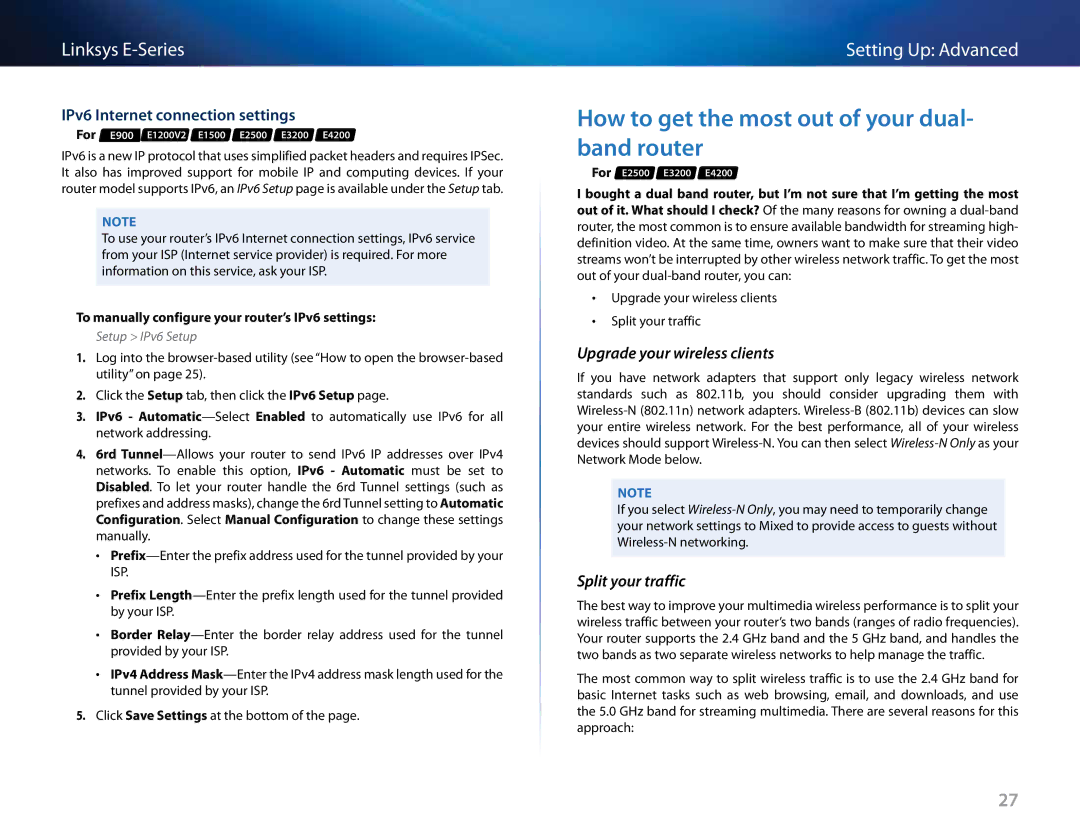
Linksys
IPv6 Internet connection settings
For E900 E1200V2 E1500 E2500 E3200 E4200
IPv6 is a new IP protocol that uses simplified packet headers and requires IPSec.. It also has improved support for mobile IP and computing devices.. If your router model supports IPv6, an IPv6 Setup page is available under the Setup tab..
Note
To use your router’s IPv6 Internet connection settings, IPv6 service from your ISP (Internet service provider) is required.. For more information on this service, ask your ISP..
To manually configure your router’s IPv6 settings:
Setup > IPv6 Setup
1.Log into the
2.Click the Setup tab, then click the IPv6 Setup page..
3.IPv6 -
4.6rd
••
•• Prefix
•• Border
•• IPv4 Address
5.Click Save Settings at the bottom of the page..
Setting Up: Advanced
How to get the most out of your dual- band router
For E2500 E3200 E4200
I bought a dual band router, but I’m not sure that I’m getting the most out of it. What should I check? Of the many reasons for owning a
•• Upgrade your wireless clients
•• Split your traffic
Upgrade your wireless clients
If you have network adapters that support only legacy wireless network standards such as 802..11b, you should consider upgrading them with
Note
If you select
Split your traffic
The best way to improve your multimedia wireless performance is to split your wireless traffic between your router’s two bands (ranges of radio frequencies).. Your router supports the 2..4 GHz band and the 5 GHz band, and handles the two bands as two separate wireless networks to help manage the traffic..
The most common way to split wireless traffic is to use the 2..4 GHz band for basic Internet tasks such as web browsing, email, and downloads, and use the 5..0 GHz band for streaming multimedia.. There are several reasons for this approach:
27
